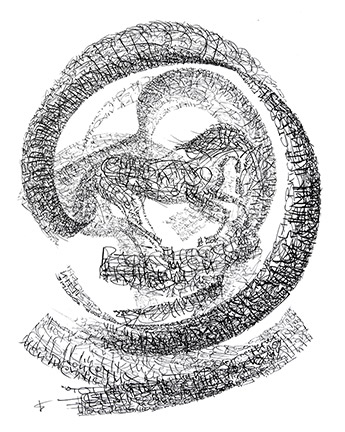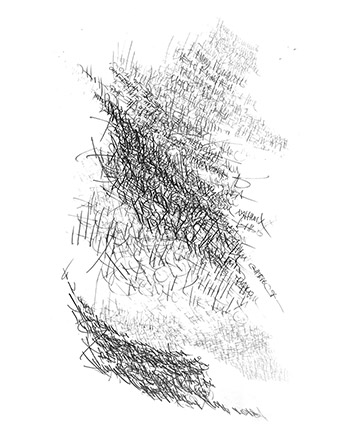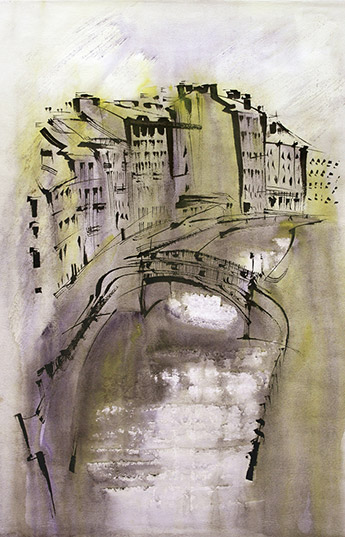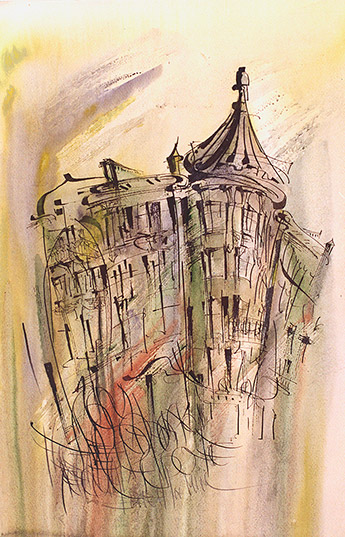“Any experience that embeds an effort is only enriching”. Interview with Ekaterina Zarkh
Calligrapher magazine spoke to Ekaterina Zarkh, an artist from Saint Petersburg and exhibitor of the International Exhibition of Calligraphy project.
— Ekaterina, how did you come to calligraphy?
— I think it was the love to a pen as a tool. I loved drawing with it. And, of course, the dip pens we used to write in school. I remember that senior students were allowed to use ball pens but I didn't like it, and I kept writing the same way as before. We had a class in art school called Scripts, where we used poster nibs, and back then it was of no interest for me… Yet somehow the broad nib sank into my heart, and I think it had an impact on my choice of the tool for the artistic activity, the pen reached out for me – both broad and pointed ones, this combination of metal, paper and water…
— What have you painted with pens?
— There was a series called “The Rain in the City”, the semi-abstract drawings of Saint Petersburg houses (pen, ink and watercolours). A city for me is primarily about houses, river walks and bridges – this is what the soul of the city is all about, it confronts pretentious and cold monumental imperial buildings. I liked the way the pen turned architecture into a stroke. Then some words emerged in this graphics: names, inscriptions, lines and poems. They were the disguised part of the painting, which served as an extension of windows and arches. And eventually instead of a house and a colour there was a poem.
A poem becomes a drawing; its rhythm extracts the image on paper as the pen carves it. These works were only based on my own poems, probably because I am at liberty to do with my words whatever I want.
Of course, it’s more graphic, not calligraphy as a text is written in a certain script. I’m not sure how I can define these images. The drawings made with words. They are abstract more often then not, the texts are illegible.
— Do you mean, one can’t read the actual poems on these works? Why?
— Some inner sense dictated that they were supposed to be concealed. The poem gives up and throws itself into chaos to conquer it and take a different shape. Despite illegible texts, each word is written explicitly, each line or stroke are the sounds of the words… Personally I know that I have no right to touch the paper occasionally, until I am completely focused. And I can only write in a complete silence.
The technique tolerates no corrections. I often use waterproof inks so that even the slightest pen move is permanent. Sometimes the movement will guide you somewhere you don’t plan to be, and it immediately changes and destroys established interconnections. It’s similar to life: you make a step, and it’s written, you can’t pretend it never happened. Be it a mistake, or a fault, you can’t fix it, and it will determine all the consequent actions and choices.
…Perhaps, these works are enigmatical or even graspless to onlookers (I’m surprised when someone expresses a sincere interest to it), but deep inside I know I need to do it exactly the way I do.
— How long does the work take you?
— It depends and can vary from a couple of weeks to a month or even two years. There is one artwork I have been coming round to for five years now. During this period I had the feeling it was completed twice, but then you take it and realize “no it isn’t”, and continue with it. This is the only way.
— Do you only apply your original manner?
— It's been a year now as I learn to do it differently. In 2009 I joined the International Exhibition of Calligraphy, and many exhibits impressed me not only aesthetically but also in terms of the true art. Through various cultures of handwritten scripts it tempted me to start doing calligraphy as it is, yet it bothered me that it will prevent me from doing something of my own. But then a year ago I attended a meet-the-artist session at the 6th International Exhibition of Calligraphy, he was a fantastic professional. His talk was so imbued with love and interest to the life of letters, and at the same time so free of pathetics. It drove me to master other scripts, beyond my own.
— What have you learned during this year? What scripts have you mastered?
— It’s been uncial and italic so far. The latter has been evading me for quite some time, but today my level is not to be ashamed of. My next goals are uncial, half-uncial and cursive. Writing the poems of one of my favourite Russian poets will need the very flexibility of these Cyrillic scripts…
— Do you feel these trainings transform yourself or what you do?
— I do, in terms of hand potential, micro movements are now more diverse. And most importantly, I am no longer restless thinking that it can distract me from what I need, from the artistic expression I found. Any experience that embeds an effort is only enriching.
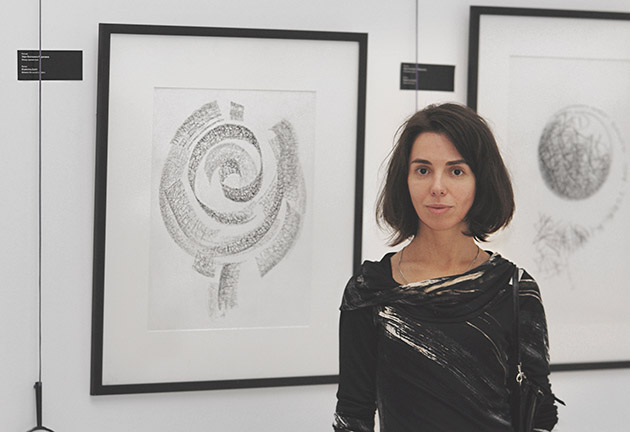 “Any experience that embeds an effort is only enriching”. Interview with Ekaterina Zarkh
“Any experience that embeds an effort is only enriching”. Interview with Ekaterina ZarkhCalligraphy — the written beauty of feelings.
